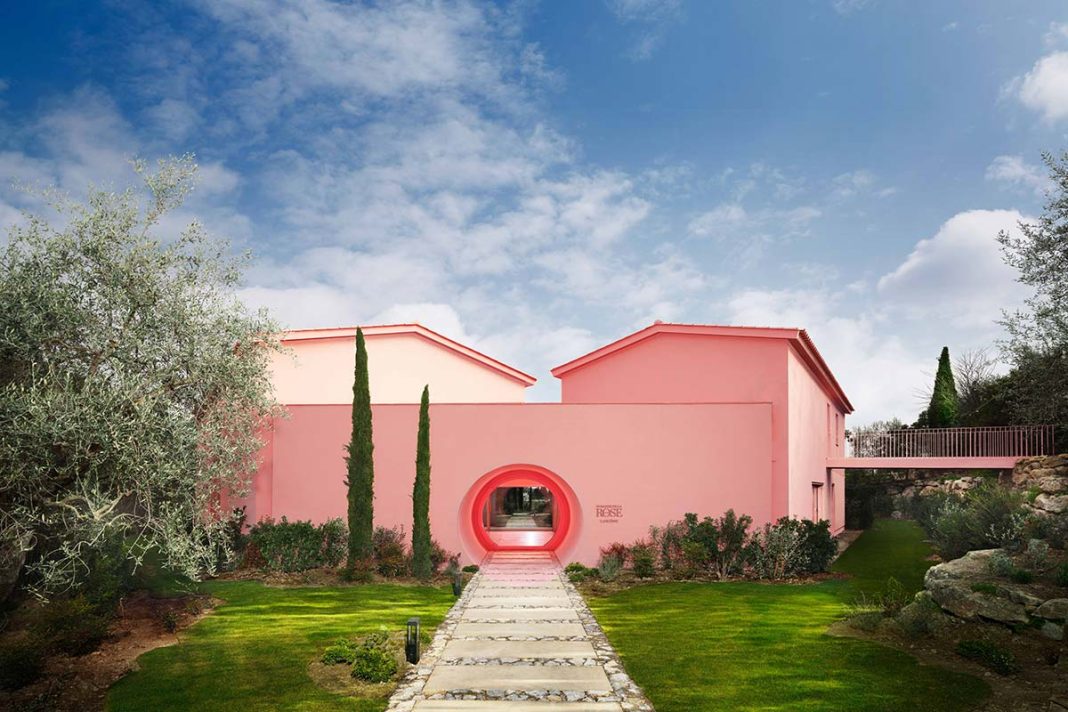Immersed in a meadow of lavender, roses and olive trees, based on the style of architecture of Provence, the Rose House has been open to the public for some time now, after a project of regeneration conducted by the architects Lucie Niney and Thibault Marca, who have conserved the original structure and layout of the building. Visitors are immediately surprised by the intense rose color of exteriors and interiors, and the circular entrance in the form of the letter “Ô” of Lancôme.
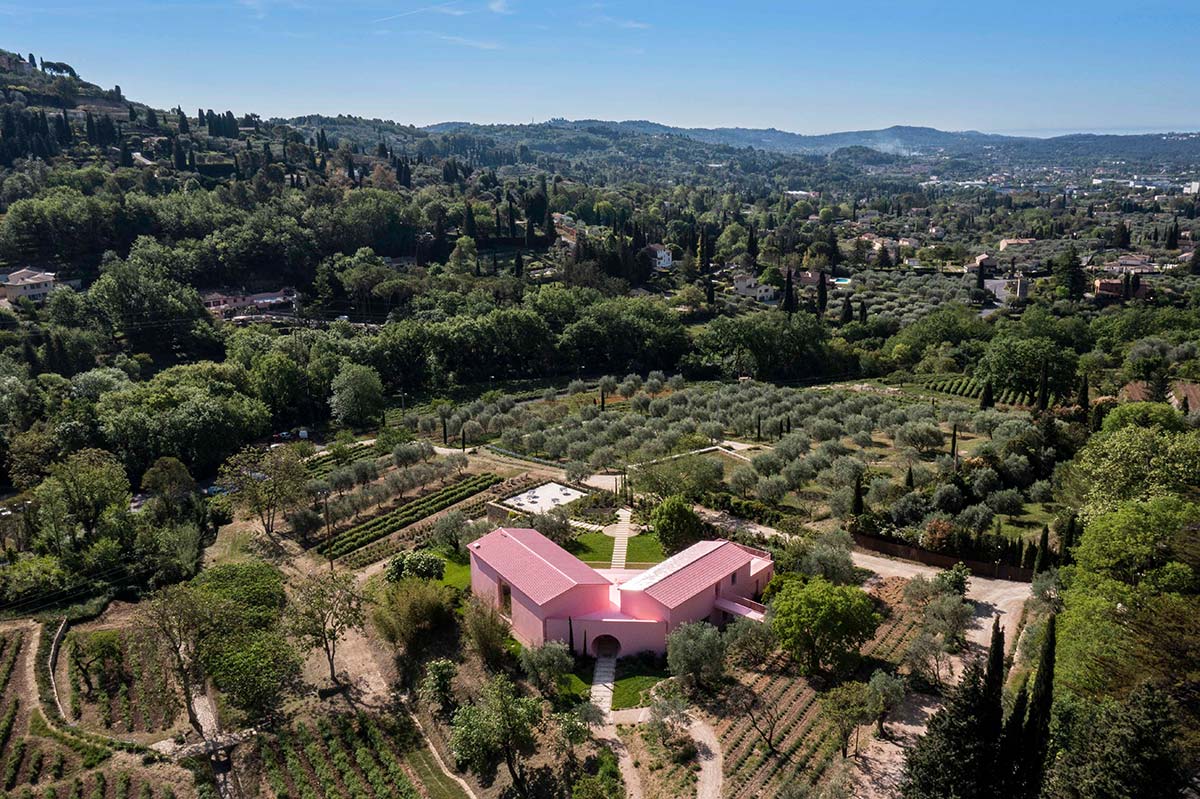
On the 4 hectare estate with Ecocert certification, Lancôme applies organic agriculture and multi-crop methods for the regenerative nurture of about ten aromatic specialties, including jasmine, iris, tuberose and Centifolia Rose. With over 250 species of flora and fauna on the property (source: LPO 2021 inventories), the ‘domaine’ is also a place of innovation and protection of biodiversity.
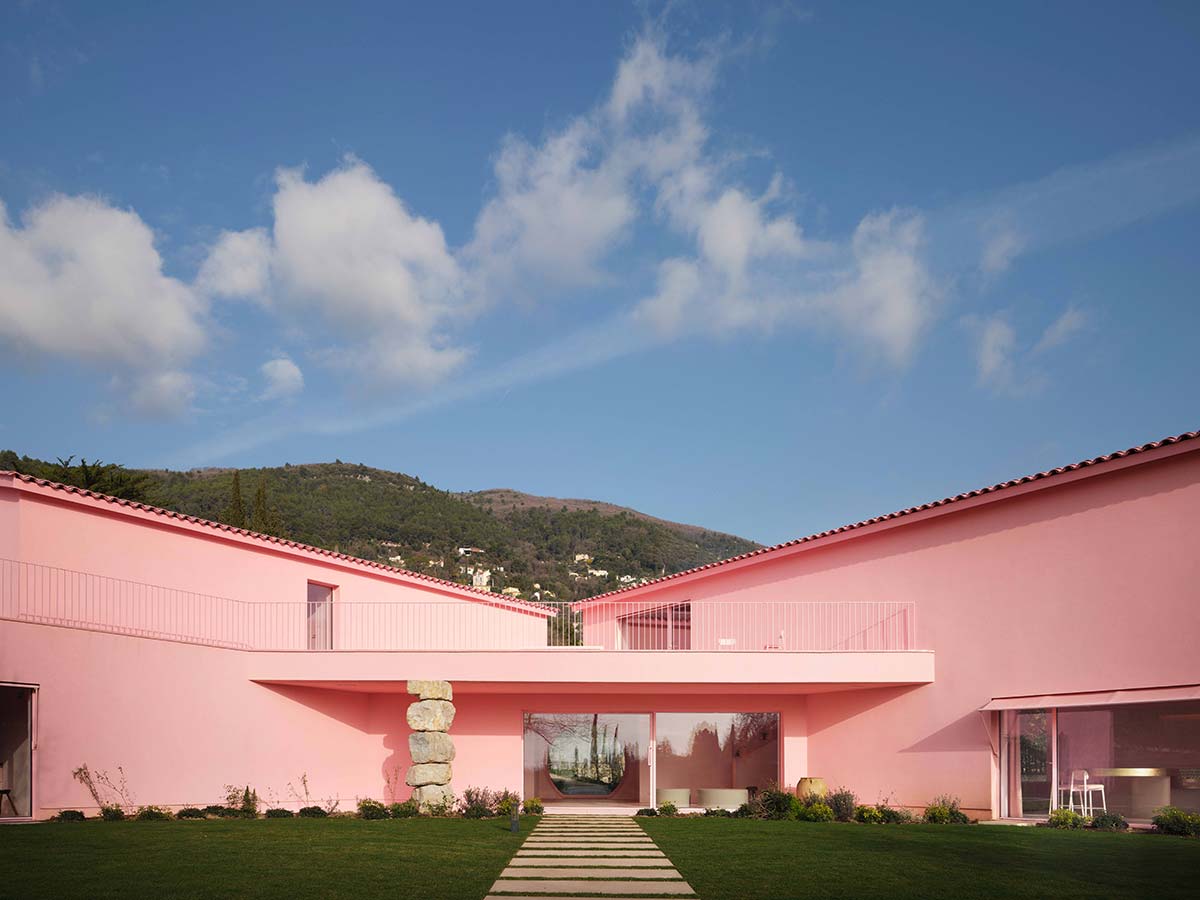
Lancôme’s aim of protecting the landscape and nature is confirmed by the design approach applied for the Rose House, based on the principles of passive bioclimatic architecture using lavender straw and Camargue rice thatching as insulation for walls and roofs, a geothermal heat pump, local and recycled materials of organic or artisanal origin, and as much natural light as possible, together with a self-sufficient irrigation system covering 90% of requirements.
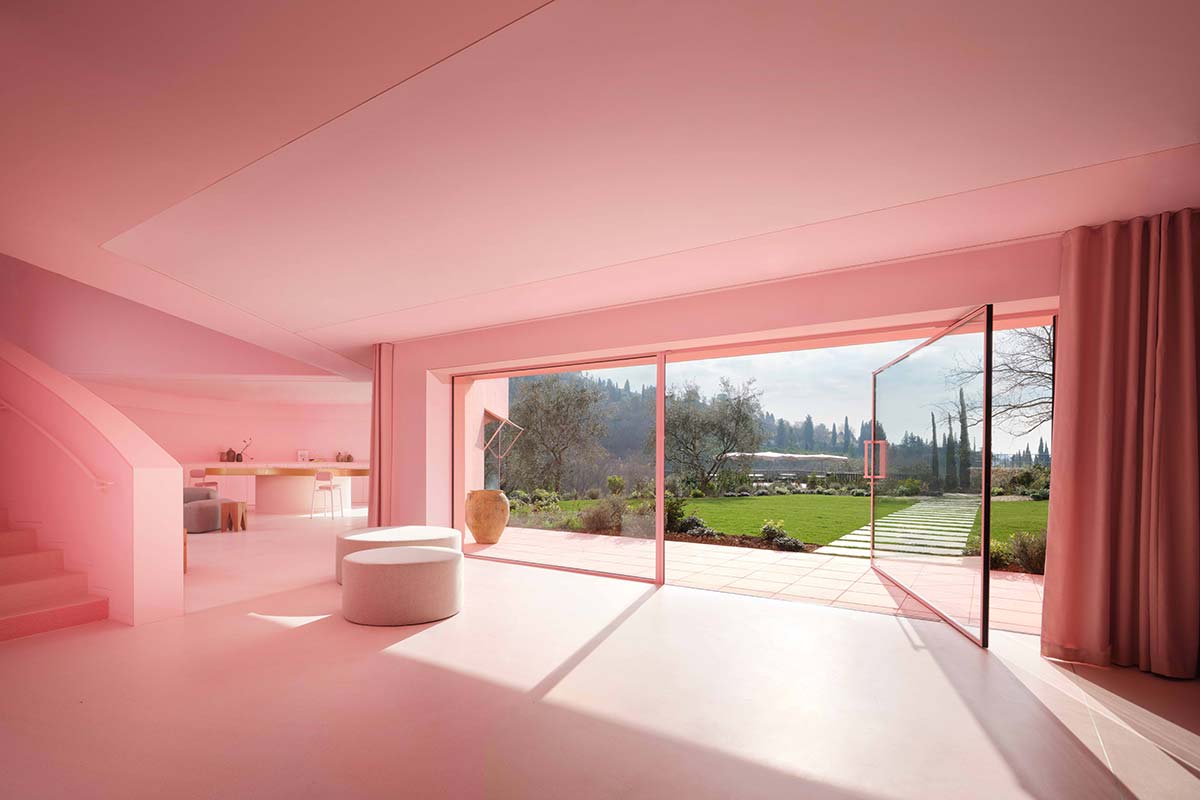
The perfume organ has been created by Atelier Gohard, the historic workshop in charge of the gilding of historical monuments like Versailles or the Louvre, while the distillery has been placed below ground level to ensure thermal inertia, completely integrated with the dry masonry container walls to blend into the natural landscape.
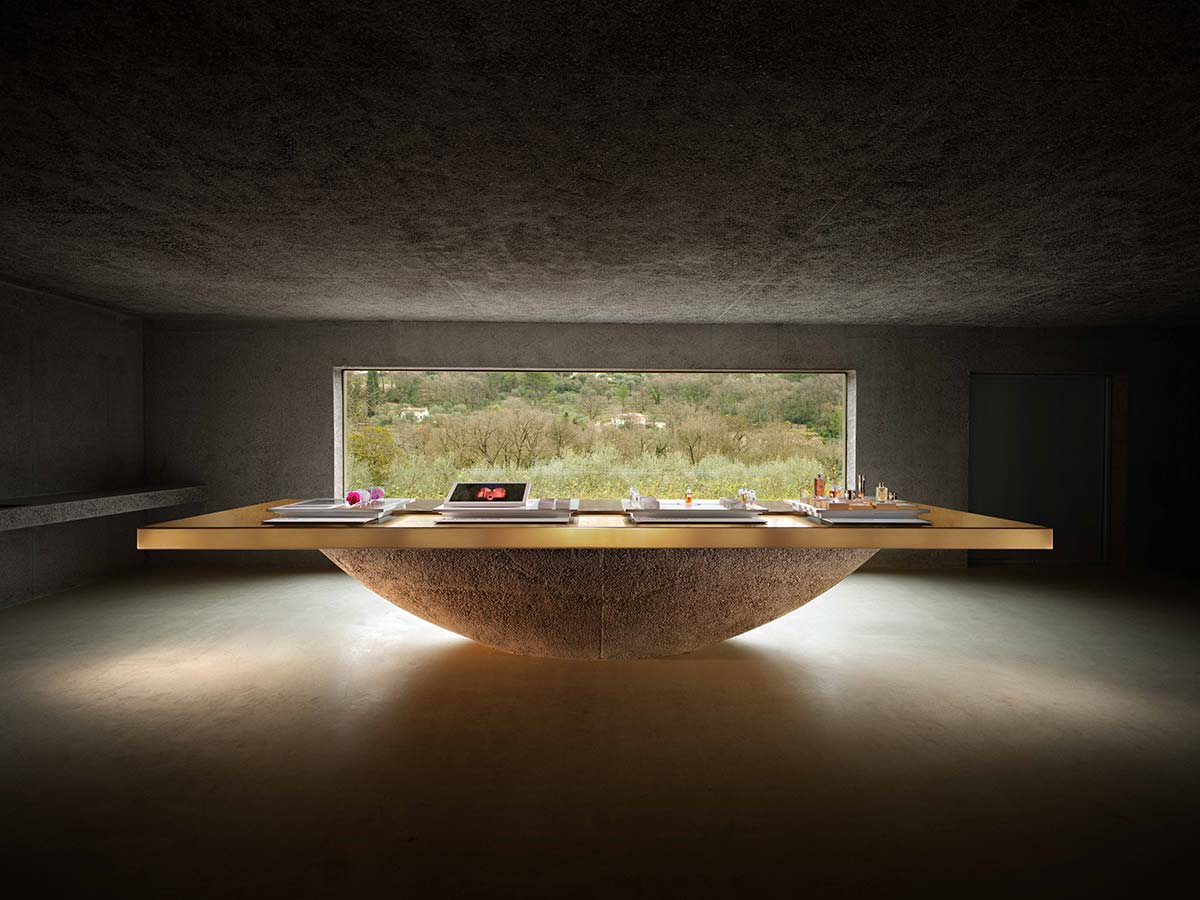
Photo © Laziz Hamani, Bruno Vacherand Denand, Passage Citron, courtesy of Lancôme

